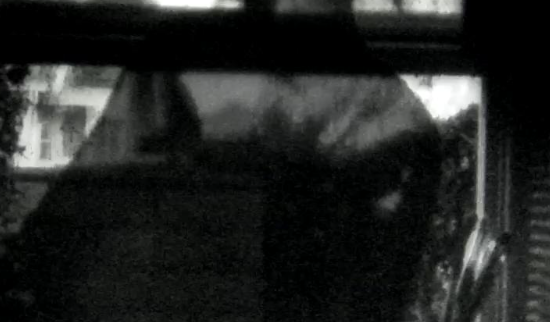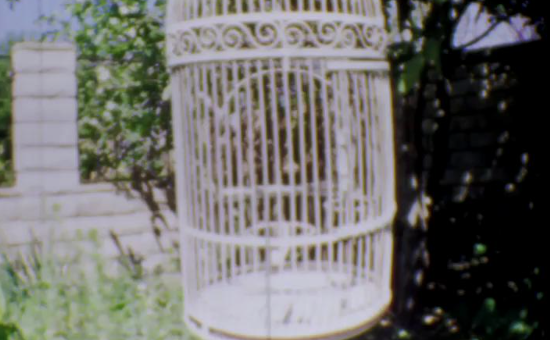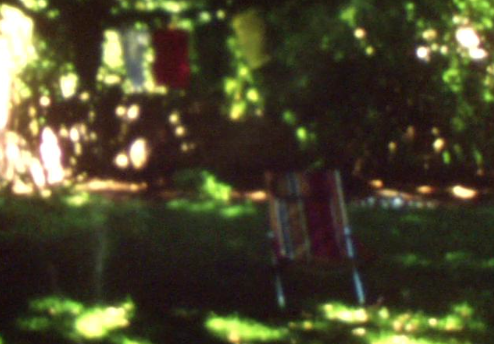Lucia Rinaldi is an Italian cinematographer currently based in Los Angeles. Lucia comes from a photography background and earned a BA in media in Milan. Her photography studies gave her the skillset to achieve intimacy within a single frame, and this background continues to influence her approach as a cinematographer. After shooting several short films in Milan, Lucia moved to Los Angeles where she recently obtained an MFA in cinematography at the American Film Institute.
An Interview with Lucia Rinaldi:
 In your bio, you mention capturing intimacy in a single frame. In your portraiture (which is beautiful by the way) and in your cinematography, how do you work with your subjects to gain the trust and rapport to capture these intimate moments?
In your bio, you mention capturing intimacy in a single frame. In your portraiture (which is beautiful by the way) and in your cinematography, how do you work with your subjects to gain the trust and rapport to capture these intimate moments?
When I started film photography the thing that would get me most frustrated was not being able to translate the feeling of intimacy into a single image. It’s something that stuck with me until I began assisting several photographers in London and observing their approach with their subjects. I learned how to not rely too much on a single idea by being comfortable changing and adapting to things on set. I also learned the importance of putting the subject at ease which I’m still improving.
Another element that really determines the relationship between subject and artist is knowing that it’s not purely about taking photos, it’s also about learning new sensitivities, new cultures and stories. I could see a huge difference in my photos between subjects who I briefly encountered and subjects who I spent days with before even taking out my camera. This of course varies from project to project, but I find that it can be a very effective way to close the gap between camera and subject.
 Larry Moss, in his book The Intent to Live, writes about “blood memory”–a concept Stella Adler espoused. Adler believed that each of us retains a blood memory of our ancestors, which helps us connect more easily to a certain cultural and emotional life. In your works, I see such a fresh, urban, global lens. On the other hand, there is this “blood memory” quality– wallpaper evoking old world Rome, sandy, sepia colors of Sicily in the 40s combined with your lush, sensual, contemporary lighting scapes. Can you talk a little about your “blood memory” and how it affects your work? Do you feel part of a lineage of Italian cinema? How do you approach integrating this stamp within the current climate, where place is a sensitive topic, and also more fluid?
Larry Moss, in his book The Intent to Live, writes about “blood memory”–a concept Stella Adler espoused. Adler believed that each of us retains a blood memory of our ancestors, which helps us connect more easily to a certain cultural and emotional life. In your works, I see such a fresh, urban, global lens. On the other hand, there is this “blood memory” quality– wallpaper evoking old world Rome, sandy, sepia colors of Sicily in the 40s combined with your lush, sensual, contemporary lighting scapes. Can you talk a little about your “blood memory” and how it affects your work? Do you feel part of a lineage of Italian cinema? How do you approach integrating this stamp within the current climate, where place is a sensitive topic, and also more fluid?
I do see some similarities between Italian cinema and my work, something I don’t think I’ve ever noticed before moving to the States. Most of the color palettes I work with in many of my projects are made by soft muted colors which remind me of where I’m from and the artists I was surrounded by throughout my school years. In fact, the geographical area where I grew up is known for its intense fog. Exactly like the dense and absorbing fog in ‘Red Desert’ by Antonioni, who is actually from the same area. For how silly it sounds, I think being immersed in very thick fog throughout every winter really shaped my taste in colors and quality of light. Only after moving to Los Angeles I got exposed to a very different light, and for a moment I thought that the two worlds would never have anything to share. But as I’m slowly growing into a new type of sensitivity here in the United States, I see my blood memory always making an appearance in my work and somehow the elements of both worlds flow well together.
 In your work, location has such a powerful presence– each with its own mood and attitude. One locations I found especially affecting are on your Instagram. A ripped up velvet Bordeaux colored couch, with a glass ashtray and burning cigarette perched on the edge, tells such a specific story and evokes such emotionality. When taking on a new project, how do you think about place? What’s important to you in a location, and how do you work with Directors to realize your vision in terms of location?
In your work, location has such a powerful presence– each with its own mood and attitude. One locations I found especially affecting are on your Instagram. A ripped up velvet Bordeaux colored couch, with a glass ashtray and burning cigarette perched on the edge, tells such a specific story and evokes such emotionality. When taking on a new project, how do you think about place? What’s important to you in a location, and how do you work with Directors to realize your vision in terms of location?
Location is one of the elements that I care most about when working on a project. I learned this the hard way during my two years at the American Film Institute. I consider the location like a character of the story, sometimes it has to be quiet and just fill in space while other times it’s invasive and imposes its presence on the story and actors.
In both cases, location is something that requires a lot of patience and a shared vision between the Director and DP. I usually try to think about how a place can help and improve the story, meaning that it can create a more cohesive look but also help with blocking and character development. Lately, I tend to give more importance to the blocking of the actors and making sure that framing and camera movement can work in a specific space, although I also like to look for few peculiar objects that can also captivate the audience’s curiosity.
 Your cinematography and photography have a unique voice– you seem attracted to capturing poles. We see sensuality and sexuality opposing estrangement, full hearts opposing heartbreak and longing for connection, details and abstracted body parts– elegant and hand held– opposing more muscular, locked-off wide shots. These spaces of opposites create an emotionality and energy that feels very raw and real– almost breakable. One shot in particular that comes to mind is in The F Word. We’re very close on an older woman’s hands, not manicured but exposing so much life– veins, brown spots, bitten nails. There’s an intimacy and vulnerability laid bare. Can you talk a little about this theme of opposites, and what draws you into these emotional paradoxes?
Your cinematography and photography have a unique voice– you seem attracted to capturing poles. We see sensuality and sexuality opposing estrangement, full hearts opposing heartbreak and longing for connection, details and abstracted body parts– elegant and hand held– opposing more muscular, locked-off wide shots. These spaces of opposites create an emotionality and energy that feels very raw and real– almost breakable. One shot in particular that comes to mind is in The F Word. We’re very close on an older woman’s hands, not manicured but exposing so much life– veins, brown spots, bitten nails. There’s an intimacy and vulnerability laid bare. Can you talk a little about this theme of opposites, and what draws you into these emotional paradoxes?
I always like to create contrast with images, even since I started photography. It’s something very difficult to logically explain, I think that contrasting images have the power of making the audience feel some type of vertigo or loss of balance, something I’ve always enjoyed experiencing and create in my own work. Most of my references come from my years as a teenager, that’s probably also why I’m so attracted by opposites, because everything seems a paradox during those years. Everything I have experienced is filled with very contrasting feelings and that’s what truly fascinates me about creating paradoxes.
 Women are still underrepresented as cinematographers. What steps can emerging filmmakers take to change these numbers?
Women are still underrepresented as cinematographers. What steps can emerging filmmakers take to change these numbers?
I think one way to change and increase the number of female cinematographers working in the industry is to trust them. The thing I notice most is that male DPs are mostly hired, even when “competing” with an equally prepared female DP, by producers and directors that tend to trust a man more than a woman. So I hope that going forward there will be more trust toward women in the cinematography department, and I would also encourage more people to take chances on new female cinematographers instead of hiring already affirmed male DPs.
Do you have a cinematography mentor? What gifts have they given you?
I consider Sandra Valde one of my mentors since I had the opportunity of having her as an instructor during my time at the American Film Institute. She is an incredible source of knowledge as well as inspiration all around. Some of Sandra’s best advice is how to be an incredible problem solver on set without losing confidence and tranquillity. I am less afraid of facing new challenges and problems on set thanks to Sandra and her willingness to share experiences which is not always a given specially among professional DPs. She is not afraid to sharing her past mistakes as well as the adversities she has encountered in the past thanks to her honesty.
 Looking forward, where do you see new ground in your work as far as artistic growth?
Looking forward, where do you see new ground in your work as far as artistic growth?
I’ve always looked at the indie world as an incredible source of artistic freedom, because you’re not under any big studios’s contract people are able to tell more personal and variegate stories. This is the path I wish to pursue and grow with that have very similar sensitivity to mine.
Contact:




No Comments